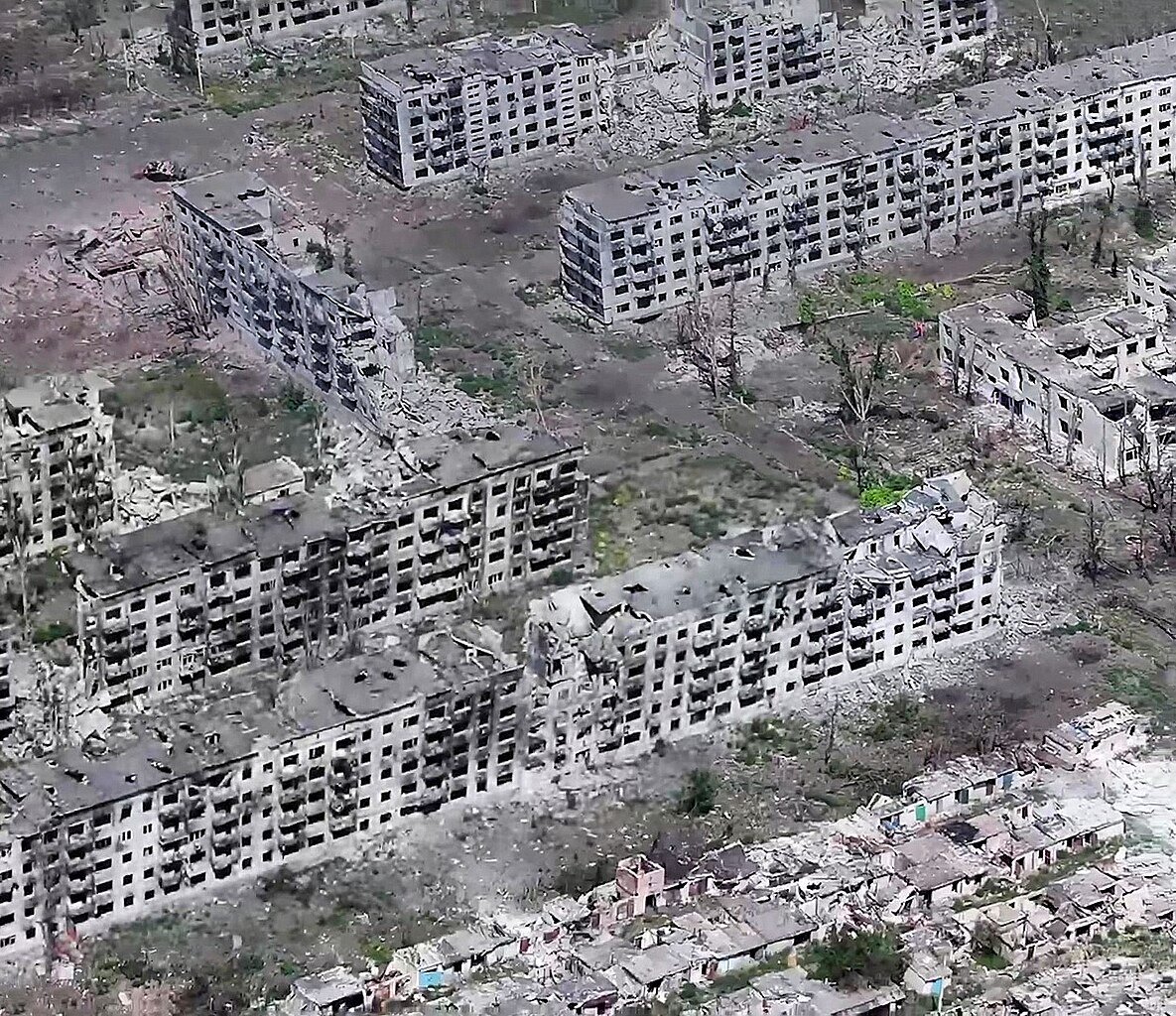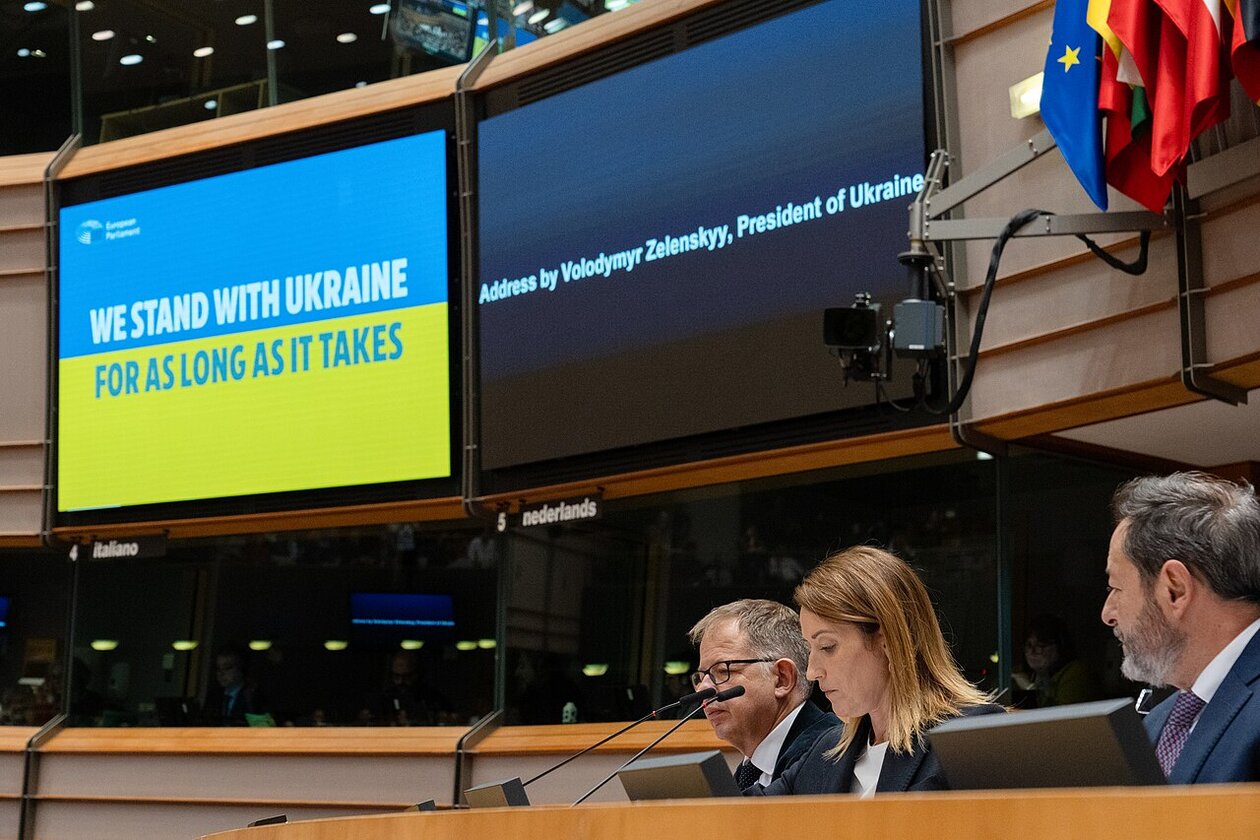Frozen Assets: How to Stop Putin’s $300 Billion Bailout
By being hesitant to seize Russia’s frozen assets, Western politicians are irresponsibly risking a multi-billion dollar injection into Russia’s war machine. A “double-lock” on sanctions can help stop this worst-case scenario. But parliamentarians and finance ministries need to act.
If you blinked, you might have missed it. At June’s end, the European Council approved a rollover of the EU’s existing Russia sanctions as people (read Hungary’s Russia-friendly leader Viktor Orban) started leaving the room.
“Oh, I forgot one little thing, the rollover of sanctions. I guess that’s okay for everybody?” European Council President Antonio Costa is to have said.
That “one little thing” included a continuation of the West’s freeze on $300 billion in Russian central bank reserves – the very same frozen assets G7 and EU leaders have been too afraid to seize outright to support Ukraine – even though it comes at no cost to taxpayers anywhere.
Yes, whether $300 billion in frozen assets is returned to Russia depends on Russia-friendly EU leaders like Orban or Slovakia’s Robert Fico going for a toilet break at the right moment during renewal votes. These votes happen every six months. With the next rollover deadline – January 31st, 2026 – a half-year away, we cannot be assured that Orban or Fico simply won’t decide to hold it next time and finally follow through on their veto threats.
Such a result would be catastrophic. Since January 2022, Ukraine has received around $450 billion in support from countries around the world. With the US reluctant to commit anything more to Ukraine and European budgets stretched, it’s hard to imagine how Ukraine and the West would need to respond in a scenario where Russia would get two-thirds of everything Ukraine has received since the full-scale invasion in one fell swoop. Yet this is the exact scenario Western leaders are currently risking by failing to act.
Furthermore, a lapse in European sanctions wouldn’t just see euro amounts returned to Russia – but also the non-euro amounts tied up in Belgian securities depository Euroclear. On top of just under 200 billion euros, this includes at least 25 billion British pounds, 22 billion Canadian dollars, and around 9 billion Australian dollars.
The simplest, most legally sound way to prevent this - in a way that sends the strongest possible signal to Russia about western resolve to support Ukraine - remains seizing the principal. But even as European governments dither over whether to fully use Russia’s own money against it, there is one thing countries with frozen assets in their currencies can do to safeguard their shares – should European fecklessness result in a breakdown of EU sanctions.

Ukrainian town of Chasiv Yar destroyed by russian attacks. Photo by: National Guard of Ukraine
How national governments can “double-lock” the asset freeze
Political will is slowly building to eventually confiscate Russia’s $300 billion. In April, over 70 high-level signatories, including four former Prime Ministers, signed an open letter in Canada’s National Post, warning about the danger of Russia getting a $300 billion bailout and calling for seizing the principal. The recent German coalition agreement specifically mentions the frozen assets while a UK House of Commons resolution and a French Parliament resolution call for confiscation. So too do the recent election platforms of both major Canadian political parties.
But until the necessary political courage is in place to actually seize the frozen assets, national governments need to do what they can to prevent the worst-case scenario and at least keep the assets frozen.
National parliaments can do this by passing their own independent freezes on frozen Russian assets in their jurisdictions. These would kick in if the European freeze ever failed – effectively a “double lock”. This is particularly crucial for non-euro countries like the UK, Canada, and Australia – as their shares may be held in correspondent bank accounts located within their jurisdictions, or even as deposits in their central banks. But European countries can do this as well.
Double-locking sanctions though, requires action from two key stakeholders - finance ministries and parliamentarians. Finance ministries first need to identify exactly which of their banks are holding frozen assets. This isn’t as straightforward as simply screening for accounts belonging to Russian state institutions. Finance ministries will have to audit accounts in their jurisdictions in Euroclear’s name. These accounts are likely to contain both frozen money that Euroclear is holding on Russia’s behalf, alongside non-sanctioned money held on behalf of other depositors. Finance ministries need to order money held on Russia’s behalf segregated into clean, discrete accounts – away from non-sanctioned amounts.
Once finance ministries clearly identify the amounts in their jurisdictions held on Euroclear’s behalf, parliamentarians can pass national freezes. This ensures their shares won’t go back to Russia – even if other shares are returned to Putin’s war economy following a potential European failure.

European Parliament held an extraordinary plenary session with Ukraine’s President Volodymyr Zelenskyy, marking 1000 days since Russia’s full-scale invasion on 19th November 2024, Photo by: European Parliament
Why is double-locking an important interim step?
Again, the best-case scenario is that the G7 and EU finally muster up the political courage to make the best strategic decision for Ukraine, European security, and international law – the full confiscation of all $300 billion in Russia’s frozen assets. Double-locking is an important insurance policy to be sure – but it is more than this.
The legal basis for seizure – using the international legal doctrine of countermeasures – is clear. Economic experts argue the risks of doing so are negligible – and likely lower than the financial risks of not confiscating. The strategic case for doing so – to both send a message to Russia and support Ukraine with real resources – as opposed to the Western drip-feed approaches of the last few years – is also obvious. The final obstacle is political.
Double-lock legislation will help confiscation-supportive governments send clear signals to two key audiences. The first will help put peer pressure on fellow Western governments that are dragging their feet – with a clear message of how high the stakes are. The second signal is to Russia itself, by communicating both that the frozen assets will never be sent back – and a potential willingness to seize them in the future.
Individual parliamentarians and citizens who want to fully support Ukraine with the frozen assets – in amounts that would end drip-feeding and make the biggest difference – can speak up in favour of double-locking sanctions.
Doing so can also help bring in new momentum on the road to full confiscation of Russia’s frozen assets, allowing the West to fully support Ukraine – and help repair our broken strategic credibility in the process.
Aaron Gasch Burnett is Co-Founder and Senior Fellow at the Berlin-based Democratic Strategy Initiative and a Non-Resident Security Policy Fellow at the European Resilience Initiative Center.